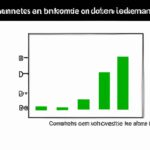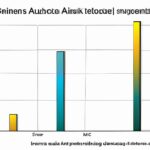The Atkinson index is an economic indicator used to measure income inequality within a population. It was developed by economist Anthony B. Atkinson and is often utilized to assess the distribution of income in a society. This index takes into account both the average income and the level of inequality, offering a comprehensive measure that considers the well-being of different income groups. The Atkinson index ranges from zero to one, with zero indicating perfect equality and one representing maximum inequality. This tool provides valuable insights that can inform policymakers and economists in their efforts to address income disparities and promote a more equitable society.
(Atkinson Index)
The Atkinson index is a widely-used measure in economics and social sciences to quantify income inequality within a population. It provides a single numerical value that represents the level of inequality, ranging from 0 to 1, with higher values indicating greater inequality. The index was developed by British economist Anthony Barnes Atkinson in 1970 as an alternative to other inequality measures such as the Gini coefficient. Atkinson believed that the Gini coefficient failed to adequately capture the distribution of income at the lower end of the spectrum, where poverty and deprivation are more prevalent. Unlike the Gini coefficient, the Atkinson index takes into account society’s aversion to inequality through the use of a parameter known as the “inequality aversion parameter.” This parameter reflects the society’s preferences regarding the distribution of income and can range from 0 to infinity, with higher values indicating greater aversion to inequality. The value of this parameter is an important determinant of the Atkinson index calculation, as it affects the weight assigned to different portions of the income distribution. The Atkinson index is calculated by dividing the difference between actual income and the hypothetical perfectly equal income by the mean income, giving it a relative interpretation. This means that it allows for comparison of income inequality across different populations or over time. One criticism of the Atkinson index is that its value can be sensitive to the choice of the inequality aversion parameter. This parameter requires subjective judgments about societal preferences, which can lead to different results depending on the chosen value. Overall, the Atkinson index provides a useful tool for understanding income inequality and can be used to compare inequality levels across different population groups or countries. Its inclusion of societal preferences towards inequality makes it a valuable measure for policymakers and researchers alike.Applications of Atkinson index.
Applications of Atkinson Index: The Atkinson index is a statistical measure used to assess the level of income inequality within a particular population or economy. It is often applied in various fields to analyze and evaluate the distribution of income or wealth. Here are some key applications of the Atkinson index: 1. Economic Policy Analysis: The Atkinson index provides policymakers with a tool to evaluate the impact of different economic policies on income inequality. By comparing Atkinson indices before and after the implementation of policies, policymakers can measure the effectiveness of their interventions in reducing inequality. 2. Poverty Measurement: The Atkinson index can also be used to assess poverty levels within a population. By focusing on the income distribution of those below the poverty line, the index helps understand the depth and severity of poverty in an economy. This information is crucial for designing targeted poverty alleviation programs. 3. International Comparisons: The Atkinson index allows for comparisons of income inequality across different countries or regions. By calculating the index for multiple economies, policymakers and researchers can identify countries with relatively high or low levels of inequality and study the factors that contribute to these disparities. 4. Social Welfare Analysis: The Atkinson index helps in evaluating the impact of income redistribution policies on social welfare. It measures the percentage loss in total national income that would be required to bring about a more equal income distribution. This helps policymakers strike a balance between equity and efficiency when designing welfare programs. 5. Health and Education Disparities: Income inequality has a significant impact on access to healthcare and education. The Atkinson index can be used to analyze the distribution of health and education outcomes among different income groups. By highlighting disparities, policymakers can identify areas that require targeted interventions to ensure equal access to these essential services. 6. Gender Inequality: The Atkinson index is also used in analyzing gender inequality in income distribution. By comparing the indices for males and females, policymakers can identify and address gender-based income disparities. This is crucial for promoting gender equality and inclusivity in economic development. 7. Sustainable Development Goals Monitoring: The United Nations’ Sustainable Development Goals (SDGs) include targets for reducing income inequality. The Atkinson index is one of the indicators used to monitor progress towards these goals. By regularly calculating and analyzing the index, policymakers can assess their progress and take necessary actions to promote income equality. In conclusion, the Atkinson index is a versatile tool for measuring and analyzing income inequality. Its applications range from economic policy analysis and poverty measurement to international comparisons and social welfare analysis. By providing insights into income disparities, the Atkinson index helps policymakers design effective interventions for reducing inequality and promoting sustainable development.
Calculation of Atkinson index
The calculation of the Atkinson index is a measure used to analyze income inequality within a population. Named after economist Anthony Atkinson, this index provides a numerical representation of how income is distributed amongst individuals or households. To calculate the Atkinson index, several steps need to be followed. The first step is to determine the parameter of inequality aversion, denoted as ε. The ε parameter represents an individual’s willingness to sacrifice their own income for a more equal distribution. Once the ε parameter is established, the second step involves ordering income or consumption data from lowest to highest. This ordering is necessary to analyze the concentration of income. The next step is to calculate the proportionate income, which is the proportion of total income held by each individual or household. The proportionate income can be obtained by dividing an individual’s income by the total income of the population. After obtaining the proportionate income, the Atkinson index can be calculated using the following formula: A(ε) = 1 – (1/n) * [(Σ(yi^ε))/(mean income^ε)] In this formula, A(ε) represents the Atkinson index for a given value of ε, n represents the number of individuals or households in the population, yi represents the proportionate income for each individual or household, and the mean income represents the average income of the population. To calculate the Atkinson index, each individual or household’s proportionate income is raised to the power of ε. These values are then summed up, and the sum is divided by the mean income raised to the power of ε. Finally, the result is subtracted from 1 and multiplied by (1/n) to obtain the Atkinson index. The Atkinson index ranges from 0 to 1, where 0 represents perfect equality and 1 represents maximum inequality. A smaller Atkinson index indicates a more equal distribution of income, while a larger index suggests higher levels of income inequality. The Atkinson index is a useful tool for policymakers and researchers to quantify income inequality and evaluate the impact of different policies or interventions aimed at reducing inequality. By understanding the calculation process, one can gain insights into the distribution of income and design targeted measures to address gaps and promote a fairer society.
Definition of Atkinson index
The Atkinson index is a statistical measure used to analyze income inequality within a population. It provides a numerical representation of the distribution of income and how it is concentrated among different individuals or households. The index takes into account both the average income and the level of inequality in that income distribution. It was developed by British economist Anthony B. Atkinson in 1970 and is widely used by economists and policymakers as a tool to assess income disparities and make informed decisions. The Atkinson index captures the idea that not all income distributions are equal, and that society’s perception of inequality can vary. It combines the utilitarian principle of equalizing income with the Rawlsian notion of prioritizing the well-being of the least-advantaged members of society. To calculate the Atkinson index, certain steps need to be followed. First, the income distribution is ranked from lowest to highest. Then, the index requires a parameter, denoted as ε, to be chosen, which reflects society’s aversion to inequality. The higher the value of ε, the higher the importance placed on tackling inequality. Next, the index calculates the weighted sum of the differences in income between each individual’s income and the average income, taking into account the parameter ε. This step aims to capture the relative deprivation experienced by individuals with respect to the average income. The Atkinson index is derived by dividing the sum of these weighted differences by the average income raised to the power of (1-ε). The resulting number ranges from 0 to 1, with 0 indicating perfect income equality and 1 indicating complete income inequality. A larger Atkinson index implies higher income inequality, while a smaller index suggests greater equality in income distribution. This measure can be useful in making comparisons over time, across different countries, or within different subgroups of a population. Although the Atkinson index has been widely used in research and policy analysis, it is not without limitations. The choice of parameter ε can significantly influence the results of the index, leading to potential subjectivity in data interpretation. Furthermore, the index only captures inequality in income distribution and does not provide insights into other forms of disparities such as wealth or educational opportunities. Overall, the Atkinson index serves as a valuable statistical tool for understanding and quantifying income inequality. By providing a comprehensive measure that considers both mean income and the level of inequality, it helps in identifying areas of concern and informing policy interventions aimed at reducing income disparities and promoting a fairer society.
Limitations of Atkinson index
The Atkinson index is a measure of economic inequality that quantifies the distribution of income or wealth in a society. While it provides valuable insights into inequality, it is important to note certain limitations inherent in the Atkinson index. These limitations can influence the interpretation and application of the index in various contexts. Firstly, the Atkinson index is based on the assumption of diminishing marginal utility of income. This means that it assumes individuals derive less additional utility from an increase in income as they have higher initial incomes. While this assumption allows for a more nuanced understanding of inequality, it may not hold true in all cases. Different individuals may have varied preferences, leading to unequal responses to changes in income. Therefore, the Atkinson index’s reliance on diminishing marginal utility may not accurately capture individual welfare or inequality. Secondly, the Atkinson index is focused solely on income or wealth inequality and does not consider other important dimensions of inequality, such as education, health, or social mobility. These dimensions are essential for a comprehensive understanding of inequality and its implications for society. By excluding these factors, the Atkinson index may provide a limited view of overall inequality and fail to capture the complete picture. Another limitation is that the interpretation of the Atkinson index is subjective and depends on the choice of parameters, such as the value of the inequality aversion parameter. This parameter determines the extent to which society values reducing inequality. Different values of this parameter can lead to different rankings of inequality and may influence policy decisions aimed at reducing inequality. Hence, the subjectivity involved in choosing this parameter introduces an element of uncertainty and potentially biases the interpretation of the index. Moreover, the Atkinson index does not account for the composition of income or wealth distribution. It treats each dollar or unit of wealth equally, regardless of its source or nature. This can be problematic as it fails to acknowledge the potential differences in the importance of income derived from various sources. For example, income from capital gains might have different implications than income from wages. Therefore, the Atkinson index’s inability to capture these nuances may limit its effectiveness in capturing the true nature of inequality. Lastly, the Atkinson index requires robust and comprehensive data on income or wealth distribution. However, data limitations and inaccuracies can hinder its accuracy and applicability. In many cases, obtaining accurate and up-to-date data on income or wealth distribution can be challenging, especially in developing countries or regions where data collection systems may be weak. This data constraint can undermine the reliability and usefulness of the Atkinson index as a tool for measuring inequality. In conclusion, while the Atkinson index provides useful insights into economic inequality, it is essential to recognize its limitations. The assumptions it relies on, its narrow focus on income or wealth, subjectivity in interpretation, lack of consideration for other dimensions of inequality, and data requirements all impact its effectiveness and applicability. Understanding these limitations can lead to a more informed interpretation of the Atkinson index and encourage the use of complementary measures to capture a holistic view of inequality.
Purpose and significance of Atkinson index
The purpose of the Atkinson index is to measure income inequality within a population. Specifically, it is designed to evaluate the distribution of income among the individuals or households in a society. By measuring inequality, the Atkinson index can provide valuable insights into the economic well-being of different segments of a population. It helps to identify whether income is distributed evenly or if there are significant disparities between the rich and the poor. One significant aspect of the Atkinson index is that it takes into account people’s perceptions of inequality. It acknowledges that individuals may perceive the impact of income inequality differently, and it incorporates this subjective element when calculating the index. This makes it a useful tool for policymakers and social scientists to understand the lived experiences and perceptions of inequality among different groups of people. The Atkinson index also has practical significance for assessing the effectiveness of various policies and redistribution mechanisms. It allows policymakers to assess the impact of different measures aimed at reducing income inequality, such as progressive taxation or social welfare programs. By comparing the Atkinson index before and after the implementation of these policies, policymakers can determine their effectiveness in reducing inequality and improving overall societal well-being. Another important aspect of the Atkinson index is that it provides a single summary measure of inequality. This makes it easier to compare inequality across different countries or regions, as well as track changes in inequality over time. The index allows policymakers to monitor progress in reducing inequality, set targets, and benchmark their performance against other areas or countries. Additionally, the Atkinson index can be used to disaggregate income inequality by different demographic characteristics, such as age, gender, or education level. This allows for a more nuanced understanding of inequality, highlighting disparities that may exist within specific subgroups of the population. Policymakers can then design targeted interventions to address these specific forms of inequality. In summary, the Atkinson index serves an important purpose in measuring income inequality and assessing its significance within a society. It helps policymakers and researchers understand the distribution of income, identify disparities, and evaluate the effectiveness of policy interventions aimed at reducing inequality. By providing a single summary measure, the Atkinson index facilitates international comparisons and allows for a more nuanced understanding of inequality within different demographic groups.













